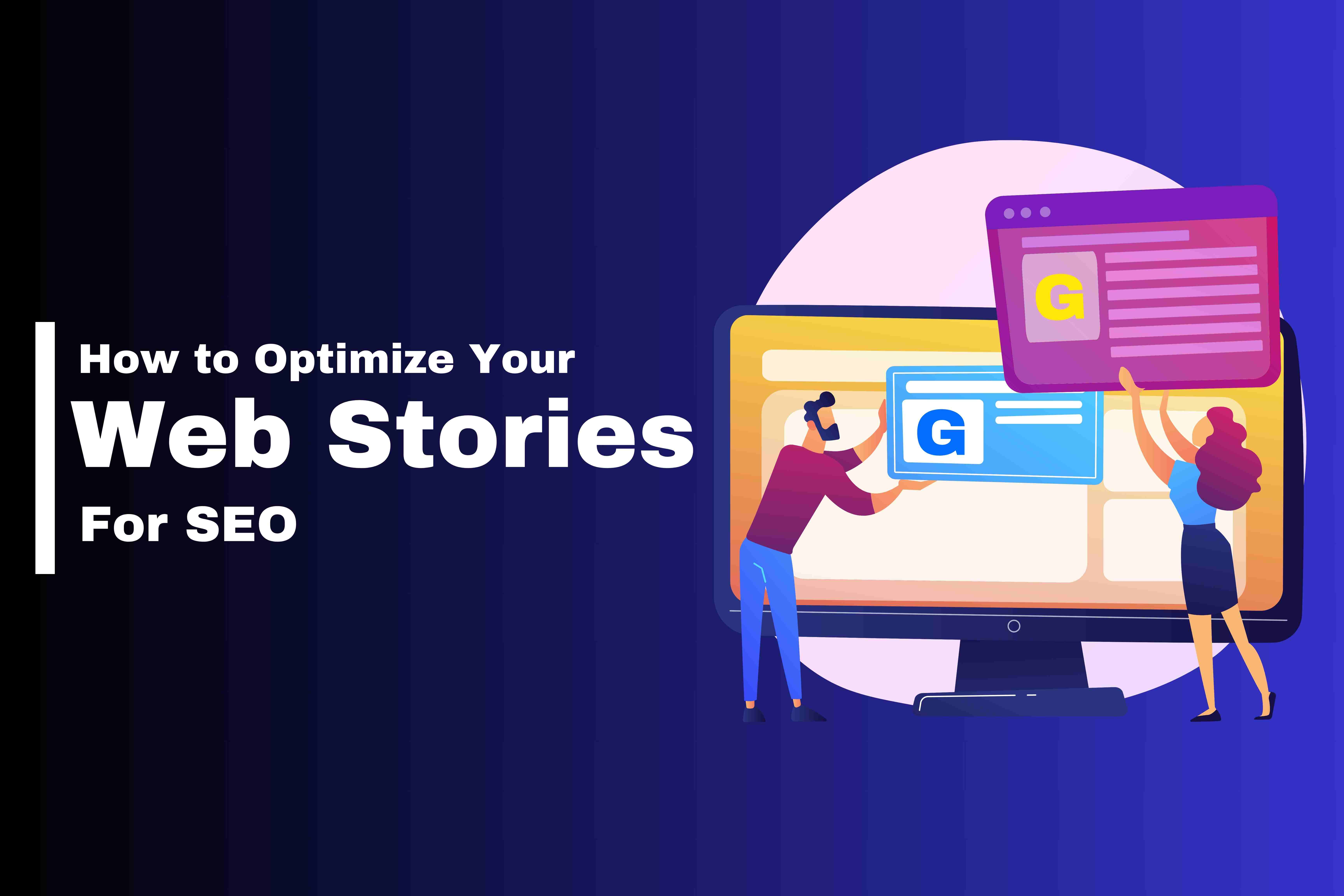Web Stories are a dynamic way to engage your audience with immersive, tappable, full-screen content. They are gaining popularity as a visual storytelling tool, offering a new opportunity to enhance your website’s visibility and drive organic traffic. However, simply creating Web Stories isn’t enough—you need to ensure that they are optimized for SEO to reach their full potential.
In this article, we’ll explore how to optimize your Web Stories for search engines, along with actionable tips and the latest SEO trends relevant to Web Stories, SEO Optimization, and Google Web Stories.
Table of Contents
- What Are Web Stories?
- Why SEO Optimization is Crucial for Web Stories
- Actionable Tips for Optimizing Web Stories for SEO
- Latest SEO Trends for Web Stories
- Conclusion
- About Don Hesh SEO
What Are Web Stories?
Web Stories are short-form, visually engaging content that displays in a slideshow format, similar to Instagram or Snapchat stories. However, Web Stories are made for the open web and can appear on Google Search, Google Discover, and even Google Images. They are designed to be consumed quickly, offering users a unique and engaging way to explore content.
For business owners, Web Stories are a powerful tool to drive traffic, increase engagement, and enhance brand visibility when optimized correctly for SEO.
Why SEO Optimization is Crucial for Web Stories
SEO optimization for Google Web Stories is critical for maximizing their reach and ensuring they appear in search results, Google Discover, and other relevant platforms. Web Stories can significantly boost organic traffic to your website, but they must be optimized to rank well and provide value to users.
Without proper SEO, your Web Stories may not perform well, limiting their potential to attract new customers. By following best SEO practices, you increase the likelihood that your Web Stories will appear in front of your target audience.
Actionable Tips for Optimizing Web Stories for SEO
1. Use Relevant Keywords
Just like traditional web content, Web Stories benefit from the use of relevant keywords. Choosing the right keywords ensures that your Web Stories are discoverable by search engines, helping to rank them higher in search results.
Actionable Tip:
- Research and target high-traffic keywords that are relevant to the content of your Web Stories. Use tools like Google Keyword Planner or Ahrefs to find the best keywords to include in your story titles, descriptions, and throughout the content.
2. Optimize Titles and Descriptions
The title and description of your Web Stories play a crucial role in how they are indexed by search engines and whether users will engage with them. Keep these elements concise, informative, and optimized for SEO.
Actionable Tip:
- Keep titles under 90 characters and ensure they include your target keywords. For descriptions, keep them under 200 characters and make sure they summarize the story’s main theme while incorporating keywords.
3. Create High-Quality Visuals
Web Stories are visual-first content, so the quality of your images and videos matters for both user engagement and SEO. High-quality visuals not only appeal to viewers but also improve the overall user experience, which is a ranking factor for SEO.
Actionable Tip:
- Use high-resolution images and videos that are clear and engaging. Ensure that all visuals load quickly and are properly sized to avoid slow page speeds, which can negatively impact SEO.
4. Ensure Fast Load Times
Page speed is a significant factor in SEO rankings, and Web Stories are no exception. Stories that take too long to load will frustrate users and be penalized by search engines.
Actionable Tip:
- Optimize images and videos for fast load times by compressing them without sacrificing quality. Tools like TinyPNG and Google PageSpeed Insights can help improve the performance of your visuals.
5. Add Proper Metadata
Metadata gives search engines important information about your Web Stories, which helps them get properly indexed and displayed to the right audience. Adding relevant metadata also increases the likelihood of appearing in Google Discover and Google Search.
Actionable Tip:
- Add schema markup to your Web Stories to ensure they are properly structured for search engines. You can use Google’s Structured Data Markup Helper to simplify this process.
6. Focus on Mobile Experience
Since Web Stories are often consumed on mobile devices, it’s crucial to optimize for a seamless mobile experience. A mobile-friendly design is essential not only for user experience but also for SEO, as Google uses mobile-first indexing.
Actionable Tip:
- Ensure your Web Stories are fully optimized for mobile devices by testing them on various screen sizes. Avoid using text or images that are too small or difficult to view on mobile devices.
7. Use Internal and External Linking
While Web Stories are designed for quick consumption, they can still drive traffic to your other content. Strategic use of internal links to other pages on your website and external links to valuable resources can enhance the user experience and SEO.
Actionable Tip:
- Add internal links to relevant blog posts, product pages, or service descriptions within your Web Stories. For external links, make sure they are authoritative and add value to your story content.
Latest SEO Trends for Web Stories
1. Integration with Core Web Vitals
Google’s Core Web Vitals focuses on user experience metrics such as load time, interactivity, and visual stability. As Web Stories become more popular, integrating Core Web Vitals metrics will be essential for better rankings.
Trend Tip:
- Monitor your Web Stories using Google Search Console and make sure they meet Core Web Vitals standards. Fast load times, minimal shifts in layout, and smooth interactivity are crucial for SEO success.
2. AI-Driven Visual Content Optimization
Artificial Intelligence (AI) is making waves in the SEO world, particularly when it comes to optimizing visuals and interactive elements. AI-driven tools can help ensure your Web Stories are highly engaging and visually compelling.
Trend Tip:
- Use AI-powered tools like Canva or Adobe Spark to create visually stunning Web Stories that align with current trends and capture audience attention.
3. Structured Data for Web Stories
Using structured data allows Web Stories to appear more prominently in search results by giving search engines more information about the content. Structured data can enhance the visibility of Web Stories, increasing the chances of them being featured in Google Discover or Google Images.
Trend Tip:
- Add structured data specific to Web Stories using schema markup for stories. Implement structured data for categories like educational, travel, or entertainment-related Web Stories.
Conclusion
Optimizing Web Stories for SEO is essential for maximizing their reach and driving more organic traffic to your website. By using relevant keywords, creating high-quality visuals, and focusing on mobile optimization, you can enhance the visibility and performance of your Web Stories. Keeping up with the latest SEO trends, such as Core Web Vitals and AI-driven content optimization, will also help your Web Stories rank higher in search engine results.
About Don Hesh SEO
Don Hesh SEO is a leading SEO consultant and Google Ads consultant dedicated to helping businesses enhance their online presence and drive organic traffic. Our expertise in AI-driven SEO strategies ensures that your business stays ahead of the competition. Partner with SEO Sydney to leverage the latest AI technologies and achieve your SEO goals efficiently and effectively.



